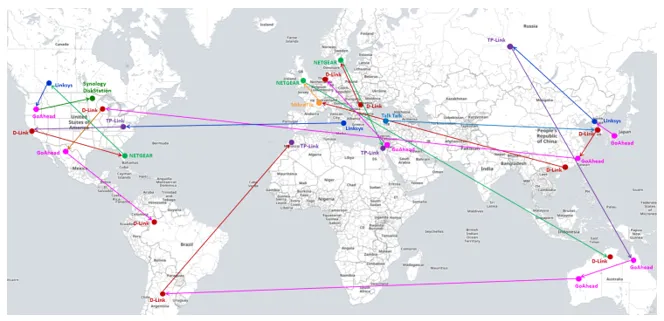
Unknown hackers are in the process of forming a new giant so-called "botnet" by cutting everyday technologies like wireless cameras and refrigerators.
Over one million organizations are already believed to be affected.
"A massive bottleneck is being created to create a cyberstorm that can shut down the Internet," warns Check Point security company on its blog.
Last year thousands of sites were attacked worldwide via the Mirai network. Hospitals, banks and transport companies were affected, and major sites like Twitter, Netflix, Amazon, Spotify, Reddit and CNN were eliminated. Even Swedish sites such as the government's website, the SF's ticket system and the Civil Protection and Emergency Agency collapsed during the overload attack, a so-called ddos attack.
Now, IT security company Check Point has discovered that a new, even bigger, botnnet is being built. Hackers utilize vulnerabilities in millions of connected devices that are cut at a much higher rate than Mirai 2016.
"So far, we estimate that over one million organizations are already affected around the world, including the United States, Australia and everything in between, and the number only increases", Check Point writes on its site.
"Our research suggests that this is calm before an even stronger storm. The next cybercore is on its way. "
Internet of Things
The hackers focus on constantly-connected everyday gadgets that are more unprotected than computers - such as cordless cameras, refrigerators and thermostats. The software is rarely updated and the gadgets are designed to be as simple as possible. It's technology in everyday life, commonly known as Internet of Things (IoT)
According to Check Point, some technical aspects of the new botnnet about Mirai remind you, but overall, the growing network is more sophisticated and potentially much more dangerous.
At the end of September, the security experts realized that something worrying was going on. An army of devices was being recruited to a bottleneck.
Each infected device is used to spread the infection to others, meaning that the number of infected IP addresses has increased low-grade in October.
Unclear who lies behind
Companies, organizations and consumers are encouraged to prepare themselves by upgrading and protecting their technology.
The purpose of an overload attack is usually to destroy or squeeze out. In this case, it is unclear who lies behind and what is the target of the expected attack.
"It's too early to judge the intentions of the threatening player behind," writes Check Point.
For more information please read : https://research.checkpoint.com/new-iot-botnet-storm-coming/